It’s called the Bilbao effect: an impecunious city engages a stellar architect to build an arts venue at fabulous expense in the expectation that urban regeneration will follow as night follows day. Alas, it doesn’t always turn out this way. Ike Ijeh gets his shotgun out
Arguably the cultural highlight of 2018, in architectural terms at least, was the opening of the V&A Dundee in September. The museum sticks closely to the script of the now familiar cultural playbook first established by the Bilbao Guggenheim and Tate Modern 20 years ago and much replicated since. Namely, that a showpiece arts venue by a stellar international architect in a deprived part of the city can reverse the cycle of post-industrial decline and become the miraculous catalyst of urban regeneration and renewed civic prestige.
It is a prescription that has now been swallowed whole by architects, mayors and curators across the world and while cities and governments in our austerity or post-austerity age struggle to find money for housing, schools and hospitals, the mere mention of a new museum or gallery by a roving “starchitect” can unlock fiscal generosity on a colossal scale. So much so that at the V&A Dundee, it was the city rather than the museum that was the client.
But what happens when this formula fails? When, instead of delivering regeneration and prestige, a celebrated venue barely manages to attract visitors and instead ends up producing the most feared beast in the public sector: a white elephant? Today this proves to be a particularly timely question because exactly 10 years ago last month, two of the biggest arts venue headaches of recent times finally opened to the public.
The Public was designed by the late Will Alsop as a pioneering arts centre in West Bromwich and proved to be so unsuccessful in its intended purpose that it is now a sixth form college.
Meanwhile Rafael Viñoly’s Curve theatre in Leicester, which finally opened in November 2008 after a two-year delay and a doubling of the budget, hit some major issues during construction. But as a venue, despite the low expectations of the naysayers, it has won over audiences in big numbers.
So, arts-led regeneration can be done, and done well. Exactly 10 years ago last Thursday, celebrated Danish architect Jørn Utzon died at the grand age of 90. And in his Sydney Opera House, he bequeathed by far the most celebrated example of an iconic arts building that started life beset by multiple failures but which has since gone on to stratospheric success.
On the next four pages, we assemble some examples of, on the one hand, arts-led projects that have singularly failed to regenerate their surrounding area, and on the other, some that despite inauspicious beginnings have had in the end a positive impact.
The ones that failed to impress
The Public, West Bromwich, UK
Architect: Will Alsop
Dates of operation: 2008-13
Cost: £72��
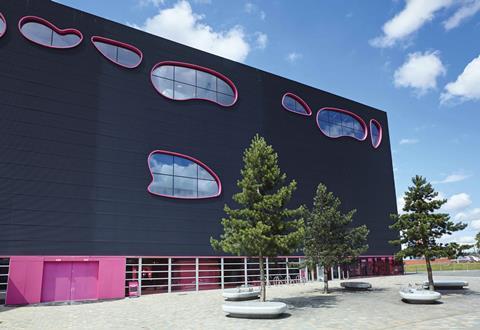
This ill-fated project tells a cautionary tale for anyone who believes that jumping on the cultural bandwagon offers an easy ride to regeneration nirvana. When the project was first conceived in the late 1990s it was envisaged as the centrepiece of an ambitious urban regeneration programme that would include a multiplex cinema, shopping centre and Europe’s biggest Tesco. But just 18 months after construction began in 2002, Alsop was removed from the project after his practice went into receivership.
In order to cap the spiralling costs and delays, a charity was then established to oversee the project but this too went into administration in 2006. The venue finally opened in 2008 but it was already two years late and £15�� over budget. Even worse, with its main interactive galleries never opening to the public due to technical difficulties, it was unable to generate the revenues promised. This prompted the third and final company collapse of the project, after which it was rescued by the local authority. But public subsidies are notoriously thin on patience when unaccompanied by public interest, and beset by falling visitor numbers the council finally closed the venue in 2013 and converted it into the sixth form college it is today.
Many cited Alsop’s whacky avant-garde architecture as the problem, the curious container-like box punctured with amorphous pink portholes. But in reality it is more likely to be the Public’s rudderless roster of oddball exhibits that seemed to lack any discernible purpose or vision that deterred visitors. What the public might have been equally piqued to learn is that as well as paying for half the construction cost, until 2009 the Arts Council was spending £520,000 a year on a project its own advice deemed as “unfit for purpose and a gross waste of public money”. Sandwell council was left subsidising the building to the tune of £1.6m annually. However, there is one consumerist silver lining on the regeneration cloud, the Public may be closed but the Tesco and multiplex are now open. Every little helps.
National Centre for Popular Music, Sheffield, UK
Architect: Nigel Coates
Dates of operation: 1999-2000
Cost: £15��

The millennium may be a distant memory now but it unleashed one of the most lavish public spending booms this country’s arts sector has ever seen. The legacy of this period lives on in dozens of buildings across the UK ranging from London’s Millennium Dome to Portsmouth’s Spinnaker Tower. But the runaway success of millennium projects such as Tate Modern and the London Eye was by no means shared by all their contemporaries and arguably the biggest failure of them all remains the short-lived National Centre for Popular Music (NCPM).
Shaping a building like a giant kettle drum is clearly asking for trouble but despite its bizarre bulbous design, the NCPM fell foul of the perennial slayer of cultural projects large and small: the failure to attract visitors. It was predicted that 400,000 would turn up in the first year; just over 100,000 ever did. The problem was inevitably one of purpose: why attend an institution that offers interactive musical exhibits that pay homage to Sheffield’s august musical heritage when any number of live gigs could be enjoyed in the city on several nights of the week?
Matters weren’t helped when budget cuts prevented the distinctive funnelled roof spouts from rotating in the wind as intended, a circumstance that led to the building’s architecture enduring further ridicule. But eventually, the core failure to attract paying visitors proved lethal and the centre closed after just 15 months. Today, it arguably makes a greater contribution to Sheffield’s musical scene by housing a university student union. But it will always provide a sober warning to arts projects everywhere of what local musician Stephen Mallinder wisely intones are the “inherent problems of institutionalising popular cultural forms”.
…and the ones that managed to turn it around
City of Arts & Sciences, Valencia, Spain
Architect: Santiago Calatrava
Opening date: 2005
Cost: £900m (estimated)
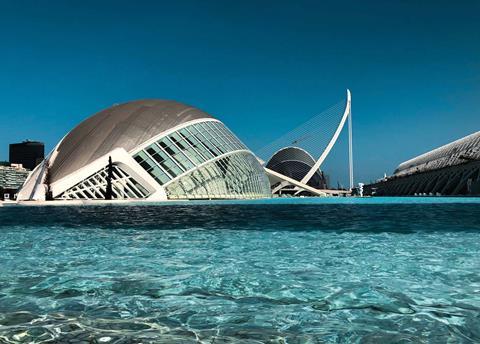
The fact that Santiago Calatrava is one of the world’s most gifted architects is alas no impediment to his projects’ tendency for budget overruns and tortuous delay. Calatrava’s WTC Transit Hub in New York may be spectacular, but opening a decade late and costing $4bn, it is the most expensive station in the world and at one stage after its unveiling did suffer problems with leaks. However, it should be recognised that the World Trade Centre was an extremely complex site and the Hub was not the only project there to experience challenges.
In Calatrava’s native Valencia his showpiece arts complex had its own set of challenges. The City of Arts and Sciences is a vast and ambitious cultural complex containing a performance hall, planetarium, bridges, science museum and an extraordinary helmet-shaped opera house clad in trademark Calatrava glistening white ceramic tiles. But the project hit problems when the tiles had to be refitted and the entire roof replaced.
The local government was indebted after financing the venue’s rising construction and maintenance costs, and in 2014 it prepared to sue Calatrava, although the case was settled out of court. Critics still took aim at the project for alleged running costs of around £35m a year and for years it was a key stop on the Valencia Wastefulness Tour, an aggrieved activists’ circuit of the multiple white elephants littered around the region.
Defenders of the centre, however, argue that comparisons with the original budget are unfair given the changes at local government level and many requests for design revisions accompanied by shifting budgets.
Moreover, there is a more positive view that the City of Arts and Sciences has brought economic success to the city, adding over 40,000 jobs and according to a recent Spanish report having a positive economic impact worth hundreds of millions of euros a year.
It now has a TripAdvisor UK average rating of 4.5 stars, no less, with reviews praising both the cultural offerings and the architecture that encases them.
The Curve, Leicester, UK
Architect: Rafael Viñoly
Opening date: 2008
Cost: £62��
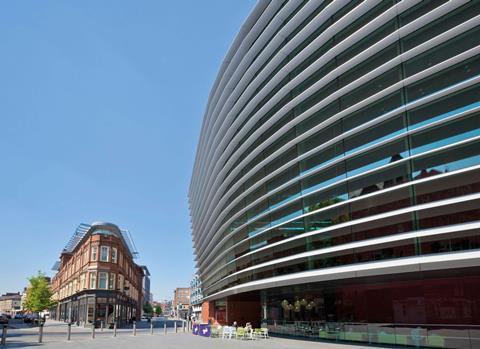
Rafael Viñoly is no stranger to controversy. Even before its facade was blamed for reflecting light that melted car parts, his Walkie Talkie tower was labelled by some as oppressive and insensitive addition to the London skyline, winning the 2015 Carbuncle Cup as a result. His Firstsite art gallery in Colchester opened three years late and provoked a degree of local anger and some contractual disputes. His Vdara Hotel in Las Vegas exhibited the same pyrotechnic proclivities as the Walkie Talkie, this time allegedly affecting guests using the pool as the sun’s rays bounced off the building’s glass facade. And his Battersea Power Station masterplan provoked former RIBA president George Ferguson to lambast Viñoly as a “major menace to London”.
But the gestation of the Leicester Curve theatre set a low point for a showpiece cultural project. The theatre opened two years late and came in at twice its original budget, partially because of a highly complex permeable facade devised to realise the venue’s “inside-out” concept. It was also marked by a series of cost disputes, which were criticised in an Audit Commission report in 2009. In 2012, former Leicester mayor and MP Peter Soulsby voiced the opinions of many when he described the venue as “the most expensive and disastrous project this city has ever seen in its history”.
But today the Curve is in the top 10 of regional theatres in the country with the last financial year being the most successful since it opened. And to accommodate rising audience numbers, 67 additional seats are to be added next year after the extra 100 installed in 2015.
Even Soulsby admits the Curve has “raised the profile of the city”. And how did it manage it? According to chief executive Chris Stafford, it’s down to the venue’s commitment to creating “diverse, entertaining and challenging theatre for our local communities”.
The Stephen Lawrence Centre, London, UK
Architect: David Adjaye
Opening date: 2007
Cost: £10��
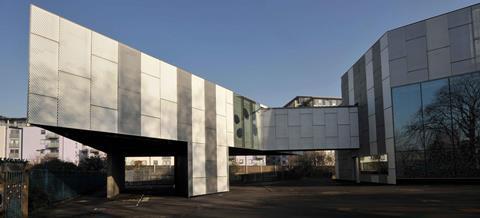
When an architect admits his own building has been unsuccessful, this is a fairly compelling indication things have not gone to plan. Speaking in 2014, Adjaye lamented that “the project has failed. It’s gated; it has security cameras everywhere and it has barbed wire”. A community and education centre that started life as an honourable and worthy tribute to a black teenager (and architecture fan) murdered in an appalling racist attack itself soon became mired in social prejudice of its own.
Within weeks of opening it was hit by vandals causing thousands of pounds of damage that was not repaired for over a year as owners and insurers argued over the extent and cost of security measures demanded by the new insurance policy. When a solution was eventually agreed, the repair was further delayed by the recession.
While antisocial delinquency is clearly not the architect’s fault, the scheme did face some criticism for its design, which included a large, intricate Chris Ofili-designed glass screen many deemed inappropriate for its tough urban context. There were also reservations about funds being allegedly spent on “designer furniture”.
Adjaye is familiar with the prospect of the premature demise of his projects – his Elektra House only narrowly avoided demolition after planning disputes, and his Wakefield Market Hall will shortly be demolished after just a decade.
But 11 years after the Stephen Lawrence Centre opened, the vandalism is a distant memory and the centre tells a very different and more positive story. Within its first year over 5,000 pupils attended its courses, which attempt to help young people from deprived areas enter architecture, and thousands more have attended since. The centre is also now widely recognised as a vital hub for social research and motivational, community-based learning. In recognition of its success, earlier this year the venue expanded with architect Gensler designing a series of co-working spaces there for local young start-up companies.
Sydney Opera House, Sydney, Australia
Architect: Jørn Utzon
Opening date: 1973
Cost: £51m (1973 prices)
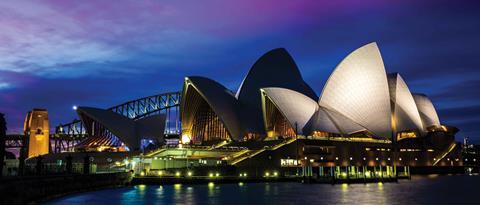
By the time Sydney Opera House was opened by the Queen in October 1973, it was 10 years late and 1,457% over budget. In fact, so horrendous was the series of delays, disasters and disputes that rocked the project’s construction that architect Jørn Utzon wasn’t even invited to the opening ceremony and mention of his name was banned throughout the evening. Under a barrage of acrimony and accusation, Utzon had resigned from the project and left the country seven years earlier.
The project’s problems began right from the start, when the Australian government insisted that construction of Utzon’s 1957 competition-winning designs begin before he had completed the final drawings. A catalogue of catastrophes then unfolded, ranging from inadequate podium structure to problems with the tortuous geometric complexity of the rooftop shells. By the late 1960s, this had contributed to a widespread view that the project was not only obscenely expensive but an unmitigated disaster.
And yet today the opera house stands as one of the most famous and recognisable buildings on earth. Its acoustic limitations are well-publicised but this has not prevented the building’s stunning transformation from construction pariah to venerated global landmark. The sculptural purity of its form is arguably the chief reason for its rehabilitation but its cultural alignment with Australia’s emerging reputation as a modern and dynamic player on the global scene must also take some credit. The completed Sydney Opera House provides proof that no matter how disastrous the construction, it’s quality rather than controversy that people remember.



























No comments yet